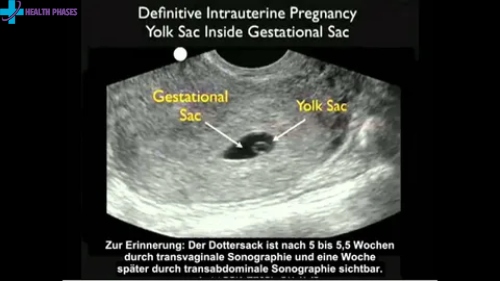As women, we all want to conceive naturally. Unfortunately, this is only sometimes the case. Intrauterine pregnancy, or pregnancy within the uterus, occurs when a fertilized egg implants in the uterine wall instead of leaving the womb in a normal delivery. Although there are many risks associated with intrauterine gestation, understanding the risk factors can help you make an informed decision about whether to have one. This blog post will explore some of the most common risk factors for intrauterine pregnancy and how you can manage them.
The Basics of Intrauterine Pregnancy
Intrauterine pregnancy is a birth event that occurs when a fertilized egg resides inside the uterus, close to the woman’s eggs and fallopian tubes. Many factors can contribute to an intrauterine gestation, including age, sexual activity, and type of contraception use. Understanding these risk factors is important for women looking to become pregnant because it can help them identify the areas in which they may be at increased risk.
Age:
Most intrauterine pregnancies occur in women aged 18-44, but can also occur in older women. The reason older women are more likely to experience intrauterine gestation is unknown, but it may be related to fertility issues or changes that can happen with age, such as decreased ovulation or problems with menstruation.
Sexual Activity:
Sexual activity doesn’t just involve intercourse – any kind of sexual activity (including oral sex) can lead to an intrauterine gestation. However, there is a higher risk of intrauterine gestation if you have had multiple sexual partners in the past year.
Contraception Use:
Several types of contraception can prevent unintended pregnancies, but some methods (such as implantable contraceptives) are more likely to result in an intrauterine gestationthan others (such as condoms). In general, using hormonal contraception (such as birth control pills) is the most likely method of preventing an intrauterine gestation – however,
The Risks of Intrauterine Pregnancy
There are countless risk factors for intrauterine gestation, and knowing them can help you make informed decisions about whether to become pregnant. Here are some of the most common:
- Age: The older you are, the greater your chances of getting pregnant by intrauterine contraception (IUC). This is because your eggs are less likely to survive long enough to develop into a fetus.
- Sexually transmitted infections: Having multiple sexual partners increases your risk of getting an STD, which can increase your chances of getting pregnant through intrauterine contraception (IUC).
- Unprotected sex: If you don’t use contraception during sex, there’s a higher chance that sperm will reach and fertilize an egg outside of marriage.
- Smoking: Smoking cigarettes increases your risk of developing ectopic pregnancies – pregnancies that occur outside the uterus – which is another reason smoking is bad for overall fertility.
- Obesity: Being overweight or obese can make it more difficult for the body to carry a pregnancy to term, especially if you’re using intrauterine contraception (IUC).
Complications of Intrauterine Pregnancy
Complications of intrauterine pregnancy can include preterm delivery, low birth weight, and congenital anomalies (birth defects). Some women also experience heavy bleeding, pelvic pain, and nausea. Contact your doctor if you are pregnant and have any of these symptoms.
How to Reduce Your Risk of Having an Intrauterine Pregnancy
You can do many things to reduce your risk of getting pregnant. Knowing the risk factors for pregnancy is important so that you can make the choices that will improve your chances of avoiding this type of pregnancy.
Here are some of the most common risk factors for intrauterine pregnancy:
Age: Intrauterine pregnancies are more common in women over 35.
Race: African American women have a higher intrauterine pregnancy rate than White women.
History of abortion or miscarriage: Women who have had an abortion or a miscarriage are at a higher risk of getting pregnant again within six months.
Contraception use: If you use contraception, be sure it is effective against intrauterine pregnancy. The best methods include condoms, birth control pills, and injectables. Some methods, such as IUD’s (intrauterine devices),
Conclusion
There are many things to consider when pregnant, but understanding the risk factors for intrauterine pregnancy is probably one of the most influential. By knowing what increases your chances of getting this type of pregnancy, you can make informed decisions about whether to try for a baby and help reduce its risks.
 Stride Post Latest News
Stride Post Latest News




